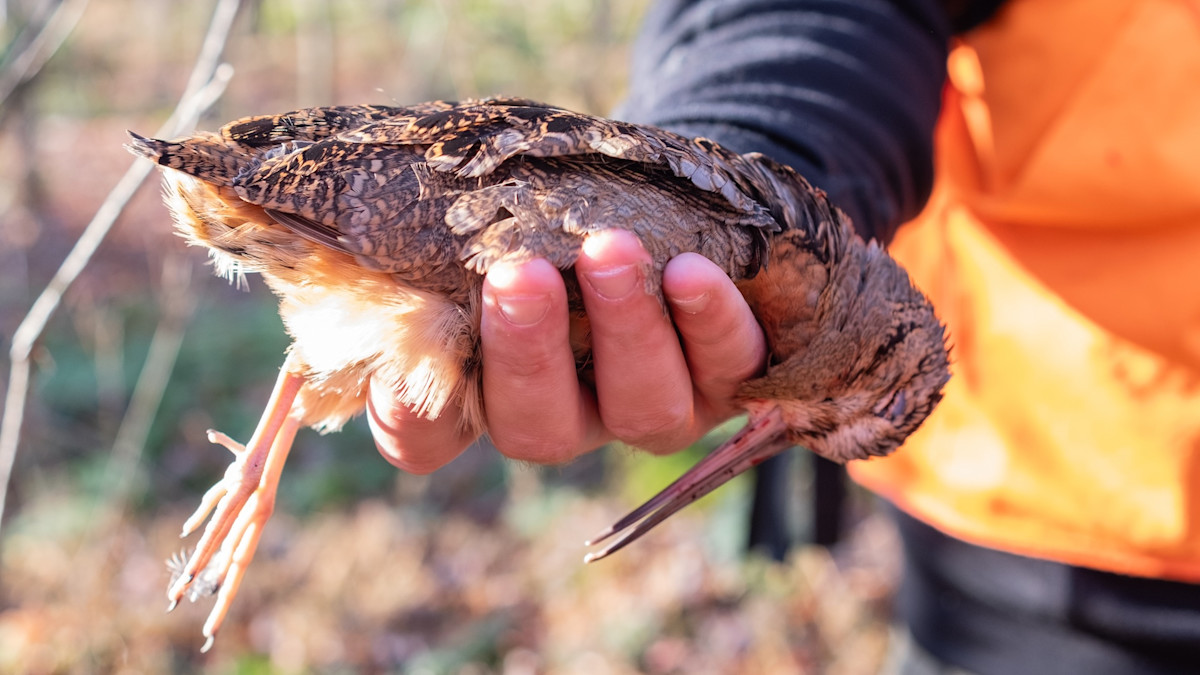
As a young hunter, I took a generalist approach to small game hunting. If I was lucky, I might come home with some combination of squirrels, rabbits, and maybe even a ruffed grouse. More often than grouse, though, I’d get a shot at a woodcock. At times, it seemed like there was a woodcock or two in every briar patch and brush pile across the road from my house. Then, at some point during late fall, it would get cold enough for the ground would freeze, and all the woodcock would be gone overnight.
Every fall and spring, the American woodcock undertakes migrations rivaling those of many waterfowl species. In the fall, they migrate from eastern Canada and New England southward into the mid-Atlantic states before eventually winding up as far south as Louisiana. In the spring, they return north.

Some tagged woodcock have been documented migrating nearly 1,000 miles twice a year. Individual birds can easily cover 150 miles in a single night. You wouldn’t know it by looking at them. Mature adults have a small drab-colored body, compact wings, and weigh just eight ounces. Also known as the timberdoodle, woodcock spend the day “doodling” around under thick overhead cover where they probe the ground with their long, narrow beaks in search of earthworms and insects.
The hunting season for the American woodcock begins in late September in northern states like Maine. Cold fronts push them inexorably southward as fall progresses. In mid-October, the birds might be concentrated in New York. A couple weeks later, they’ll be found in Pennsylvania and Maryland. Hard frosts in this region will then send the birds packing to states throughout the Southeastern United States.

Finding woodcock means finding good woodcock habitat. Start by looking for young forests with dense undergrowth. Zero-in on edge habitats like thick brush bordering wetlands or stands of young saplings next to more mature forest. Soft, moist soil is a must, too. But without a good bird dog, it can be difficult to zero in on woodcocks even in good habitat.
Woodcocks are known for holding tight before they flush. A hunter without a bird dog will walk right past a lot more timberdoodles than he’ll flush. But because they are so reluctant to flush, they’re the ideal gamebird for pointing dogs. A good pointer allows hunters the time to work into the ideal shooting position before freeing their dog to flush the bird. Flushing dogs can work well, too, so long as they work very close to the shooter.

Woodcock hunters need to be quick on the draw. What the woodcock lacks in looks compared to a drake mallard or rooster pheasant, it more than makes up for when it comes time to pull the trigger. I’ve missed way more of the little gamebirds than I’ve hit, but they've taught me a lot about fast and instinctive wingshooting.
When flushed, woodcocks rocket almost silently, straight up out of thick cover before zigzagging out of sight. Rarely do they present a clear shot as they fly erratically through trees and brush. Don’t hesitate—just point and shoot.

A fast-swinging break action 20-gauge with an open cylinder or skeet choke in one barrel, and an improved cylinder in the other barrel is the ideal woodcock setup. The diminutive birds aren’t hard to kill, either—as long as you can hit them.
All you need are inexpensive, low brass 2¾ shells loads with size #7½ or #8 shot. When you do manage to knock a woodcock down, be sure to mark exactly where they fell. Their plumage blends in perfectly with fall leaf litter. Dogs that are trained to find dead birds by scent will save woodcock hunters a lot of time and heartache. Even with a good mark and a good dog, finding a downed woodcock in heavy cover is often an exercise in diligence and patience.

But finding them is indeed worth it. Small as they are, woodcock makes for excellent table fare. Plan on two to three birds per person. Their breast meat is dark with a flavor that resembles duck or dove. Woodcock pluck very easily, and preserving their skin prevents them from drying out as they cook. Whole woodcock roasted fast and hot to medium-rare pairs extremely well with a balsamic glaze, fruit compote, or berry-based sauce.







